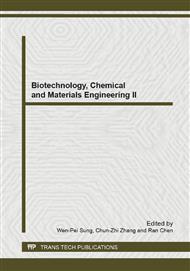p.105
p.109
p.113
p.117
p.123
p.128
p.132
p.136
p.140
Reaction Characteristics of Ce-Based Oxygen Carrier for Two-Step Production Syngas and Hydrogen through Methane Conversion and Water Splitting
Abstract:
The two-step steam methane reforming for production syngas and hydrogen was investigated by using Ce-based oxygen carriers (CeO2, CeO2-ZrO2,CeO2-Fe2O3) which were prepared by co-precipitation method and characterized by means of X-ray diffractometer and Raman spectroscopy. CH4 temperature programmed and isothermal reactions were adopted to test syngas production reactivity, and redox properties were evaluated by a successive redox cycle. The results showed that the incorporation of ZrO2 into CeO2 was found to be an effective approach for enhancing the reducibility of CeO2 in methane conversion reaction and redox performance, and the addition of Fe2O3 into CeO2 could obviously increase the amount of reactive oxygen species in CeO2-Fe2O3 and the yields of syngas and hydrogen reached maximum in the 3rd cycle, but the redox stability of CeO2-Fe2O3 needs to be enhanced.
Info:
Periodical:
Pages:
123-127
Citation:
Online since:
January 2013
Authors:
Keywords:
Price:
Сopyright:
© 2013 Trans Tech Publications Ltd. All Rights Reserved
Share:
Citation:


